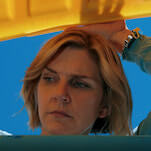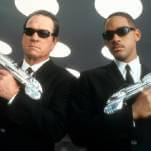Robert Aunger: The Electric Meme: A New Theory Of How We Think

Created as an attempt to read cultural events in scientific terms, the field of memetics has flitted about in theoretical realms since the mid-'70s, when biologist Richard Dawkins devised the notion of the "meme" as a cultural counterpart to the genes that govern the biological world. Comprising everything from ideas and tunes to clothing styles and ways to build tools, memes have been held up as a catchall embodiment of the intangible aspects of cultural evolution. As the field has grown, however, memetics has yet to present even the slightest bit of evidence for the material existence of memes, let alone a workable theory for the way they move between people and objects while greasing the gears of cultural machinery. Serving as a levelheaded apologist for his more fanciful peers, Robert Aunger attempts to lend credence to memetics by applying its novel ideas to the rigors of hard science in The Electric Meme. For memes to matter as a concept, Aunger argues, they would first have to account for aspects of cultural evolution not already covered by genetic and psychological theories that cite heredity and imitation as the keys to culture. Beyond that, to truly serve as evolutionary agents, memes would have to be capable of replicating in a manner independent from currently understood biological processes. By no means an easy read, The Electric Meme does a wondrous job of charting this murky territory. A noted memeticist who cites skepticism as both healthy and necessary for a field that's too ungrounded to move forward, Aunger takes a macroscopic approach to his material, always keeping one eye on the forest as the other zooms in on the molecular makeup of the trees. Focusing on the replication prerequisite for memes, the author details computer viruses and prions—the creepy pathogens behind mad-cow disease that, unlike all other life forms, reproduce without the aid of nucleic acids—as examples of replicators that defy the rules of gene duplication. At stake is whether culture evolves on its own or merely as a consequence of heredity. Aunger ultimately fingers both by pointing to certain neural states of the brain, in which memes exist as networks with a propensity to instigate certain behaviors and responses. Memes in the brain initiate one person's actions (speaking, dancing, believing in God) and replicate by effectively hitching a ride with that action into another person's receptive brain. A good bit of The Electric Meme is inevitably geared toward the semantic battles of academic specialists, but Aunger's inviting stab at accessibility shines a warm laboratory lamp on the acts of communication and cultural advancement. As Aunger notes in closing, genetics was largely a non-empirical field until the '50s, so the notion of memetics as a cultural cousin seems more than fit for proper probing.








































